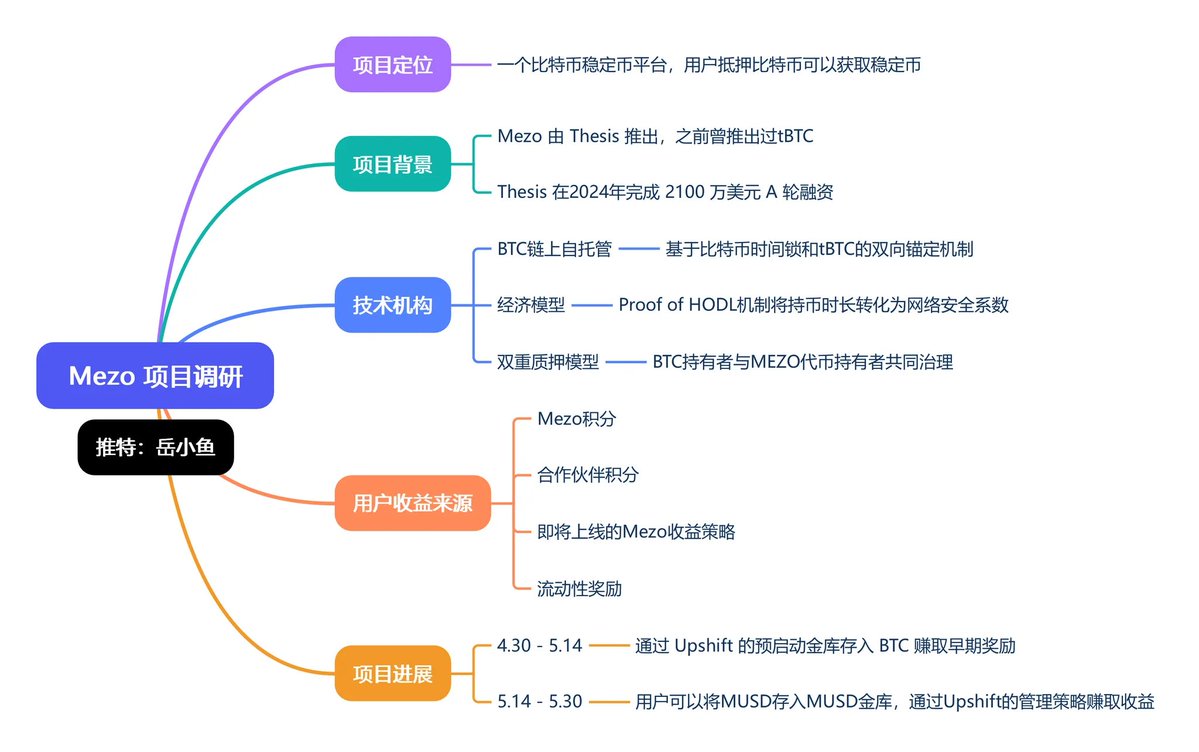
DAI
DAI 价格
$1.0001
+$0.000100000
(+0.00%)
过去 24 小时的价格变化

您感觉 DAI 今天会涨还是会跌?
您可以通过点赞或点踩来分享对该币种今天的涨跌预测
投票并查看结果
免责声明
本页面的社交内容 (包括由 LunarCrush 提供支持的推文和社交统计数据) 均来自第三方,并按“原样”提供,仅供参考。本文内容不代表对任何数字货币或投资的认可或推荐,也未获得欧易授权或撰写,也不代表我们的观点。我们不保证所显示的用户生成内容的准确性或可靠性。本文不应被解释为财务或投资建议。在做出投资决策之前,评估您的投资经验、财务状况、投资目标和风险承受能力并咨询独立财务顾问至关重要。过去的表现并不代表未来的结果。您的投资价值可能会波动,您可能无法收回您投资的金额。您对自己的投资选择自行承担全部责任,我们对因使用本信息而造成的任何损失或损害不承担任何责任。提供外部网站链接是为了用户方便,并不意味着对其内容的认可或控制。
请参阅我们的 使用条款 和 风险警告,了解更多详情。通过使用第三方网站(“第三方网站”),您同意对第三方网站的任何使用均受第三方网站条款的约束和管辖。除非书面明确说明,否则欧易及其关联方(“OKX”)与第三方网站的所有者或运营商没有任何关联。您同意欧易对您使用第三方网站而产生的任何损失、损害和任何其他后果不承担任何责任。请注意,使用第三方网站可能会导致您的资产损失或贬值。本产品可能无法在所有司法管辖区提供或适用。
请参阅我们的 使用条款 和 风险警告,了解更多详情。通过使用第三方网站(“第三方网站”),您同意对第三方网站的任何使用均受第三方网站条款的约束和管辖。除非书面明确说明,否则欧易及其关联方(“OKX”)与第三方网站的所有者或运营商没有任何关联。您同意欧易对您使用第三方网站而产生的任何损失、损害和任何其他后果不承担任何责任。请注意,使用第三方网站可能会导致您的资产损失或贬值。本产品可能无法在所有司法管辖区提供或适用。
DAI 市场信息
市值
市值是通过流通总应量与最新价格相乘进行计算。市值 = 当前流通量 × 最新价
流通总量
目前该代币在市场流通的数量
市值排行
该资产的市值排名
历史最高价
该代币在交易历史中的最高价格
历史最低价
该代币在交易历史中的最低价格
24 小时最高
$1.0016
24 小时最低
$0.99780
历史最高价
$8,976.00
-99.99% (-$8,975.00)
最后更新日期:2019年8月2日
历史最低价
$0.0011000
+90,818.18% (+$0.99900)
最后更新日期:2019年8月2日
DAI 动态资讯
以下内容源自 。

CoinDesk
根据 Steakhouse Financial 的 Sky 撰稿人创建的一份报告,DeFi 储蓄协议 Sky 在向代币持有者支付的利息增加了一倍多后,第一季度亏损 500 万美元。
与上一季度相比,亏损是一个明显的转变,当时 Sky(前身为 MakerDAO)的利润为 3100 万美元。利息支付增加 102% 的原因是决定激励使用该协议更新的 Sky dollar 稳定币 (USDS) 而不是现有的 DAI。
“相对于市场其他部分,Sky 储蓄率保持在 12.5% 的非常高水平,推动了大量资金流入,”Sky 的联合创始人 Rune Christensen 通过 Telegram 告诉 CoinDesk。他说,当 Sky 在 2 月份开始将利率降至 4.5% 时,许多投资者都留下来了。
这种情况对该协议来说是一把双刃剑,该协议是 2017 年在以太坊上涌现的第一批去中心化金融应用程序之一。
Sky 的运作方式类似于传统银行。它需要以高于支付给储户的利率向他人放贷。
然而,区块链研发公司 GFX Labs 的治理联络员 PaperImperium 在 Telegram 上告诉 CoinDesk,在对 USDS 提供更高的费率而没有相应地增加对稳定币的需求的情况下,正在损害协议的盈利能力。
“USDS 是收益的主要拖累因素,”他说。“DAI 赚钱。USDS,没那么多。
向 USDS 的推动是 Sky 所谓的 Endgame 计划的一部分,该计划由 Christensen 领导,旨在将协议转变为一个更加去中心化和有弹性的系统。
没有新的需求?
当 Sky 从 MakerDAO 更名并于 8 月推出 USDS 作为 Endgame 的一部分时,计划是新的稳定币将吸引与 DAI 不同的用户群。
USDS 旨在更好地遵守法规和财务报告要求。它的目标投资者是对冲基金、家族办公室和其他希望涉足去中心化金融的机构等成熟投资者。
但目前尚不清楚 USDS 是否能够吸引大量新用户。
投资者可以从 USDS 上获得的回报与 DAI 不同:USDS 支付 4.5%,而 DAI 收益率为 2.75%。
PaperImperium 表示,许多投资者将他们的 DAI 换成了 USDS,这意味着 Sky 向以前乐于获得较低收益或在许多情况下根本没有收益的人支付了更多费用。
可以肯定的是,该报告称,自本季度初以来,USDS 和 DAI 的总供应量增加了 57%。但这一增长的很大一部分来自合成美元协议 Ethena。它已将超过 4.5 亿美元投入质押的 USDS,并将收益传递给那些持有自己的稳定币 USDe 的人。
在过去的一周里,Ethena 已将其部分储备从 USDS 转为 USDtb——一种由贝莱德的美元机构数字流动性基金 (BUIDL) 支持的稳定币。
此举意味着流通中的 USDS 减少。但它也可能通过减少协议必须支付的利息金额而使 Sky 受益。
阅读更多:MakerDAO 的 Christensen 希望在 MKR 持有者对 Sky Brand 进行投票时做出“坚定的决定”
查看原文1.3万
0

Phyrex
最近 RWA 和 稳定币 的话题讨论的已经越来越多了,尤其是在 Cirlce 冲击上市以后,越来越多的稳定币项目方认为基于美债发行的稳定币是最稳定和确保固收的产品,但实际上这么做的人还是少了点,无它,一方面是虽然收益稳定,但只拿 4% 左右的收益率可能还不够补贴市场。
其次,稳定币的购买力市场已经足够饱和,USDT 和 USDC 已经分担了最大的市场份额,其它的稳定币即便是老牌的 DAI 在市场中都处于微末的状态,更不要说对于交易所的支持, FDUSD 和 TUSD 就是最好的例子。
那么没有支付和购买环节的稳定币,为什么还会有人在使用,就是因为“收益率”,从2020年的算稳开始,稳定币作为支付途径已经越来越少,更多的是作为协议的支持来提供收益,质押就是最好的协议。
早期的 DAI 就是这个道理,通过质押 ETH 超额抵押来获得稳定币的敞口,但随着 ETH 价格波动的放大,DAI 已经从稳定币转型到了“质押平台”。所以不如直接做美债抵押物,更稳定,更少操心,虽然收益可能减少,但稳定性提升,爆仓减少,适用性也提升了。
但链上确实还是有大量的 $BTC 和 $ETH 的抵押需求,并且链上的借贷也是现在 DeFi 最好确权的收益方式,所以通过 BTC 和 ETH 的借贷来撬动用户的现货杠杆,用美债来对冲风险,这是一套很标准的组合,流动资金通过借贷市场、流动性提供者头寸和收益最大化策略持续超越被动策略,将资产充分利用。
Resolv 的抵押池将发展为一组隔离的、收益优化的资产集群,集成蓝筹 DeFi 协议。但 ETH 和 BTC 毕竟市场上的协议已经很多了,所以就有了更“狂野”的玩法,将山寨币以及合约的抵押和对冲加入到收益池中来扩大收益率。 Resolv 通过构建对冲的山寨币金库,以从这些高利率环境中捕获合成美元收益,同时保持风险控制。
@ResolvLabs 就是这样的玩法,Resolv 是一种中性差价稳定币架构,核心是 $USR ,与美元挂钩的稳定币,包括中性 Delta 永续合约、质押、借贷和再质押等范畴。
并且采用了双币的方案,其中 $USR 作为稳定的收益层,可以视为抵押物直接生成的稳定币,而 $RLP 则是通过波动来获得收益。目前 Resolv 也和 Pandle 有合作,支持 USR 在 Pandle 的质押和积分获取。
6.2万
54

Yan Meng @ Solv Protocol | ERC-3525
@SolvProtocol

岳小鱼
《比特币生态需要一种真正创新且好用的稳定币!》
比特币现在需要解决这一重要的命题:怎样将比特币变成生息资产?
1、稳定币才是比特币生态最大的变量!
首先是可以重塑比特币的功能定位:
比特币的高波动性使其更适合长期持有而非日常支付。稳定币以比特币为抵押,挂钩美元,提供价格稳定性,使用户能将 BTC 转化为可用于支付、借贷或 DeFi 的资产,而无需卖出。
稳定币将比特币从单一资产转变为金融生态的锚点。
其次是可以改变用户行为:
比特币持有者多秉持 HODL 理念,不愿卖出 BTC 以获取流动性。稳定币允许用户通过抵押 BTC 获得美元稳定币,满足消费或投资需求,同时保留 BTC 的长期增值潜力。
稳定币激励用户从“被动持有”转向“主动参与”,扩大比特币生态的用户基础。
还有就是可以扩展生态经济模型:
比特币生态的 DeFi 应用(如借贷、流动性挖矿)受限于 BTC 的波动性。稳定币提供稳定的交易媒介,增强比特币资产在 DeFi 中的可用性。
稳定币可以将比特币生态从“单一资产驱动”转变为“多元化金融生态”,类似以太坊生态通过 DAI 和 USDC 实现的 DeFi 繁荣。
2、值得关注比特币生态美元稳定币有哪些?
之前已经有很多项目做出了尝试,但核心问题在于高波动抵押品导致的稳定性和清算风险、跨链桥安全性不透明、收益和治理机制缺乏清晰性,以及生态整合与用户定位不足。
这些问题限制了稳定币在比特币生态中的规模化应用。
而新玩家Mezo @MezoNetwork 的 MUSD 通过成熟技术、清晰定位和低成本策略,克服了 DAII 的问题,是目前杀出来的一匹黑马。
比特币生态稳定币最核心的三个问题是:收益从哪里来?怎么保持稳定币的价值稳定?怎么保证比特币的安全性?
我们具体看下Mezo是怎么解决的:
(1)收益从哪里来?
Mezo 的收益主要来自贷款利息、清算罚金、铸造/交易费用以及 mats 积分系统的潜在增值(空投预期)。
低利率和积分激励吸引用户规模增长,而清算罚金和交易费用在高波动市场中提供稳定收入。
未来,Mezo 可通过优化费用结构和治理机制进一步多元化收益来源。
(2)怎么保持稳定币的价值稳定?
MUSD 的设计目标是与美元 1:1 挂钩,其价值稳定依赖于超额抵押、动态调整和清算机制的结合,借鉴了 MakerDAO 的 DAI 模型,但专注于比特币资产。
单一抵押品设计贴合比特币生态,但需应对价格波动风险。
Mezo 可通过优化预言机和清算机制,以及扩大 MUSD 应用场景,进一步增强稳定性。
(3)怎么保证比特币的安全性?
Mezo 的核心资产是用户存入的比特币(包括 BTC、tBTC、WBTC 等),其安全性依赖于智能合约、跨链桥和协议治理的稳健性。
Thesis 的技术背景和透明运营为其加分,但跨链桥和预言机仍是潜在风险点。
Mezo 可通过保险机制和社区治理进一步巩固安全性。
3、总结一下
比特币生态的美元稳定币市场目前以 MUSD (Mezo) 为主要代表,其他明确以比特币为抵押、挂钩美元的稳定币几乎不存在。
MUSD 填补了比特币生态美元稳定币的空白,精准捕捉了 2025 年比特币持有者从 HODL 向金融化的行为转变。
如果 MUSD 能在支付场景(比如跨境汇款)和安全性上突破,它很可能成为比特币生态的“去中心化银行”,推动比特币生态的进一步发展。
我们可以持续保持关注。

1.73万
1
DAI 价格表现 (美元)
DAI 当前价格为 $1.0001。DAI 的价格在过去 24 小时内上涨了 +0.01%。目前,DAI 市值排名为第 0 名,实时市值为 $36.38亿,流通供应量为 3,638,038,526 DAI,最大供应量为 3,638,038,526 DAI。我们会实时更新 DAI/USD 的价格。
今日
+$0.000100000
+0.00%
7 天
-$0.00090
-0.09%
30 天
-$0.00050
-0.05%
3 个月
-$0.00030
-0.03%
关于 DAI (DAI)
此评级是欧易从不同来源收集的汇总评级,仅供一般参考。欧易不保证评级的质量或准确性。欧易无意提供 (i) 投资建议或推荐;(ii) 购买、出售或持有数字资产的要约或招揽;(iii) 财务、会计、法律或税务建议。包括稳定币和 NFT 的数字资产容易受到市场波动的影响,风险较高,波动较大,可能会贬值甚至变得一文不值。数字资产的价格和性能不受保证,且可能会发生变化,恕不另行通知。您的数字资产不受潜在损失保险的保障。 历史回报并不代表未来回报。欧易不保证任何回报、本金或利息的偿还。欧易不提供投资或资产建议。您应该根据自身的财务状况仔细考虑交易或持有数字资产是否适合您。具体情况请咨询您的专业法务、税务或投资人士。
展开更多
- 官网
- 白皮书
- 区块浏览器
关于第三方网站
关于第三方网站
通过使用第三方网站(“第三方网站”),您同意对第三方网站的任何使用均受第三方网站条款的约束和管辖。除非书面明确说明,否则 OKX 及其关联方(“OKX”)与第三方网站的所有者或运营商没有任何关联。您同意 OKX 对您使用第三方网站而产生的任何损失、损害和任何其他后果不承担任何责任。请注意,使用第三方网站可能会导致您的资产损失或贬值。
DAI 常见问题
DAI 今天值多少钱?
目前,一个 DAI 价值是 $1.0001。如果您想要了解 DAI 价格走势与行情洞察,那么这里就是您的最佳选择。在欧易探索最新的 DAI 图表,进行专业交易。
数字货币是什么?
数字货币,例如 DAI 是在称为区块链的公共分类账上运行的数字资产。了解有关欧易上提供的数字货币和代币及其不同属性的更多信息,其中包括实时价格和实时图表。
数字货币是什么时候开始的?
由于 2008 年金融危机,人们对去中心化金融的兴趣激增。比特币作为去中心化网络上的安全数字资产提供了一种新颖的解决方案。从那时起,许多其他代币 (例如 DAI) 也诞生了。
DAI 的价格今天会涨吗?
查看 DAI 价格预测页面,预测未来价格,帮助您设定价格目标。
ESG 披露
ESG (环境、社会和治理) 法规针对数字资产,旨在应对其环境影响 (如高能耗挖矿)、提升透明度,并确保合规的治理实践。使数字代币行业与更广泛的可持续发展和社会目标保持一致。这些法规鼓励遵循相关标准,以降低风险并提高数字资产的可信度。
资产详情
名称
OKcoin Europe LTD
相关法人机构识别编码
54930069NLWEIGLHXU42
代币名称
Dai Token
共识机制
Dai Token is present on the following networks: binance_smart_chain, ethereum.
Binance Smart Chain (BSC) uses a hybrid consensus mechanism called Proof of Staked Authority (PoSA), which combines elements of Delegated Proof of Stake (DPoS) and Proof of Authority (PoA). This method ensures fast block times and low fees while maintaining a level of decentralization and security. Core Components 1. Validators (so-called “Cabinet Members”): Validators on BSC are responsible for producing new blocks, validating transactions, and maintaining the network’s security. To become a validator, an entity must stake a significant amount of BNB (Binance Coin). Validators are selected through staking and voting by token holders. There are 21 active validators at any given time, rotating to ensure decentralization and security. 2. Delegators: Token holders who do not wish to run validator nodes can delegate their BNB tokens to validators. This delegation helps validators increase their stake and improves their chances of being selected to produce blocks. Delegators earn a share of the rewards that validators receive, incentivizing broad participation in network security. 3. Candidates: Candidates are nodes that have staked the required amount of BNB and are in the pool waiting to become validators. They are essentially potential validators who are not currently active but can be elected to the validator set through community voting. Candidates play a crucial role in ensuring there is always a sufficient pool of nodes ready to take on validation tasks, thus maintaining network resilience and decentralization. Consensus Process 4. Validator Selection: Validators are chosen based on the amount of BNB staked and votes received from delegators. The more BNB staked and votes received, the higher the chance of being selected to validate transactions and produce new blocks. The selection process involves both the current validators and the pool of candidates, ensuring a dynamic and secure rotation of nodes. 5. Block Production: The selected validators take turns producing blocks in a PoA-like manner, ensuring that blocks are generated quickly and efficiently. Validators validate transactions, add them to new blocks, and broadcast these blocks to the network. 6. Transaction Finality: BSC achieves fast block times of around 3 seconds and quick transaction finality. This is achieved through the efficient PoSA mechanism that allows validators to rapidly reach consensus. Security and Economic Incentives 7. Staking: Validators are required to stake a substantial amount of BNB, which acts as collateral to ensure their honest behavior. This staked amount can be slashed if validators act maliciously. Staking incentivizes validators to act in the network's best interest to avoid losing their staked BNB. 8. Delegation and Rewards: Delegators earn rewards proportional to their stake in validators. This incentivizes them to choose reliable validators and participate in the network’s security. Validators and delegators share transaction fees as rewards, which provides continuous economic incentives to maintain network security and performance. 9. Transaction Fees: BSC employs low transaction fees, paid in BNB, making it cost-effective for users. These fees are collected by validators as part of their rewards, further incentivizing them to validate transactions accurately and efficiently.
The Ethereum network uses a Proof-of-Stake Consensus Mechanism to validate new transactions on the blockchain. Core Components 1. Validators: Validators are responsible for proposing and validating new blocks. To become a validator, a user must deposit (stake) 32 ETH into a smart contract. This stake acts as collateral and can be slashed if the validator behaves dishonestly. 2. Beacon Chain: The Beacon Chain is the backbone of Ethereum 2.0. It coordinates the network of validators and manages the consensus protocol. It is responsible for creating new blocks, organizing validators into committees, and implementing the finality of blocks. Consensus Process 1. Block Proposal: Validators are chosen randomly to propose new blocks. This selection is based on a weighted random function (WRF), where the weight is determined by the amount of ETH staked. 2. Attestation: Validators not proposing a block participate in attestation. They attest to the validity of the proposed block by voting for it. Attestations are then aggregated to form a single proof of the block’s validity. 3. Committees: Validators are organized into committees to streamline the validation process. Each committee is responsible for validating blocks within a specific shard or the Beacon Chain itself. This ensures decentralization and security, as a smaller group of validators can quickly reach consensus. 4. Finality: Ethereum 2.0 uses a mechanism called Casper FFG (Friendly Finality Gadget) to achieve finality. Finality means that a block and its transactions are considered irreversible and confirmed. Validators vote on the finality of blocks, and once a supermajority is reached, the block is finalized. 5. Incentives and Penalties: Validators earn rewards for participating in the network, including proposing blocks and attesting to their validity. Conversely, validators can be penalized (slashed) for malicious behavior, such as double-signing or being offline for extended periods. This ensures honest participation and network security.
奖励机制与相应费用
Dai Token is present on the following networks: binance_smart_chain, ethereum.
Binance Smart Chain (BSC) uses the Proof of Staked Authority (PoSA) consensus mechanism to ensure network security and incentivize participation from validators and delegators. Incentive Mechanisms 1. Validators: Staking Rewards: Validators must stake a significant amount of BNB to participate in the consensus process. They earn rewards in the form of transaction fees and block rewards. Selection Process: Validators are selected based on the amount of BNB staked and the votes received from delegators. The more BNB staked and votes received, the higher the chances of being selected to validate transactions and produce new blocks. 2. Delegators: Delegated Staking: Token holders can delegate their BNB to validators. This delegation increases the validator's total stake and improves their chances of being selected to produce blocks. Shared Rewards: Delegators earn a portion of the rewards that validators receive. This incentivizes token holders to participate in the network’s security and decentralization by choosing reliable validators. 3. Candidates: Pool of Potential Validators: Candidates are nodes that have staked the required amount of BNB and are waiting to become active validators. They ensure that there is always a sufficient pool of nodes ready to take on validation tasks, maintaining network resilience. 4. Economic Security: Slashing: Validators can be penalized for malicious behavior or failure to perform their duties. Penalties include slashing a portion of their staked tokens, ensuring that validators act in the best interest of the network. Opportunity Cost: Staking requires validators and delegators to lock up their BNB tokens, providing an economic incentive to act honestly to avoid losing their staked assets. Fees on the Binance Smart Chain 5. Transaction Fees: Low Fees: BSC is known for its low transaction fees compared to other blockchain networks. These fees are paid in BNB and are essential for maintaining network operations and compensating validators. Dynamic Fee Structure: Transaction fees can vary based on network congestion and the complexity of the transactions. However, BSC ensures that fees remain significantly lower than those on the Ethereum mainnet. 6. Block Rewards: Incentivizing Validators: Validators earn block rewards in addition to transaction fees. These rewards are distributed to validators for their role in maintaining the network and processing transactions. 7. Cross-Chain Fees: Interoperability Costs: BSC supports cross-chain compatibility, allowing assets to be transferred between Binance Chain and Binance Smart Chain. These cross-chain operations incur minimal fees, facilitating seamless asset transfers and improving user experience. 8. Smart Contract Fees: Deployment and Execution Costs: Deploying and interacting with smart contracts on BSC involves paying fees based on the computational resources required. These fees are also paid in BNB and are designed to be cost-effective, encouraging developers to build on the BSC platform.
Ethereum, particularly after transitioning to Ethereum 2.0 (Eth2), employs a Proof-of-Stake (PoS) consensus mechanism to secure its network. The incentives for validators and the fee structures play crucial roles in maintaining the security and efficiency of the blockchain. Incentive Mechanisms 1. Staking Rewards: Validator Rewards: Validators are essential to the PoS mechanism. They are responsible for proposing and validating new blocks. To participate, they must stake a minimum of 32 ETH. In return, they earn rewards for their contributions, which are paid out in ETH. These rewards are a combination of newly minted ETH and transaction fees from the blocks they validate. Reward Rate: The reward rate for validators is dynamic and depends on the total amount of ETH staked in the network. The more ETH staked, the lower the individual reward rate, and vice versa. This is designed to balance the network's security and the incentive to participate. 2. Transaction Fees: Base Fee: After the implementation of Ethereum Improvement Proposal (EIP) 1559, the transaction fee model changed to include a base fee that is burned (i.e., removed from circulation). This base fee adjusts dynamically based on network demand, aiming to stabilize transaction fees and reduce volatility. Priority Fee (Tip): Users can also include a priority fee (tip) to incentivize validators to include their transactions more quickly. This fee goes directly to the validators, providing them with an additional incentive to process transactions efficiently. 3. Penalties for Malicious Behavior: Slashing: Validators face penalties (slashing) if they engage in malicious behavior, such as double-signing or validating incorrect information. Slashing results in the loss of a portion of their staked ETH, discouraging bad actors and ensuring that validators act in the network's best interest. Inactivity Penalties: Validators also face penalties for prolonged inactivity. This ensures that validators remain active and engaged in maintaining the network's security and operation. Fees Applicable on the Ethereum Blockchain 1. Gas Fees: Calculation: Gas fees are calculated based on the computational complexity of transactions and smart contract executions. Each operation on the Ethereum Virtual Machine (EVM) has an associated gas cost. Dynamic Adjustment: The base fee introduced by EIP-1559 dynamically adjusts according to network congestion. When demand for block space is high, the base fee increases, and when demand is low, it decreases. 2. Smart Contract Fees: Deployment and Interaction: Deploying a smart contract on Ethereum involves paying gas fees proportional to the contract's complexity and size. Interacting with deployed smart contracts (e.g., executing functions, transferring tokens) also incurs gas fees. Optimizations: Developers are incentivized to optimize their smart contracts to minimize gas usage, making transactions more cost-effective for users. 3. Asset Transfer Fees: Token Transfers: Transferring ERC-20 or other token standards involves gas fees. These fees vary based on the token's contract implementation and the current network demand.
信息披露时间段的开始日期
2024-04-20
信息披露时间段的结束日期
2025-04-20
能源报告
能源消耗
38501.82538 (kWh/a)
能源消耗来源与评估体系
The energy consumption of this asset is aggregated across multiple components:
To determine the energy consumption of a token, the energy consumption of the network(s) binance_smart_chain, ethereum is calculated first. Based on the crypto asset's gas consumption per network, the share of the total consumption of the respective network that is assigned to this asset is defined. When calculating the energy consumption, we used - if available - the Functionally Fungible Group Digital Token Identifier (FFG DTI) to determine all implementations of the asset of question in scope and we update the mappings regulary, based on data of the Digital Token Identifier Foundation.

















社媒平台热度